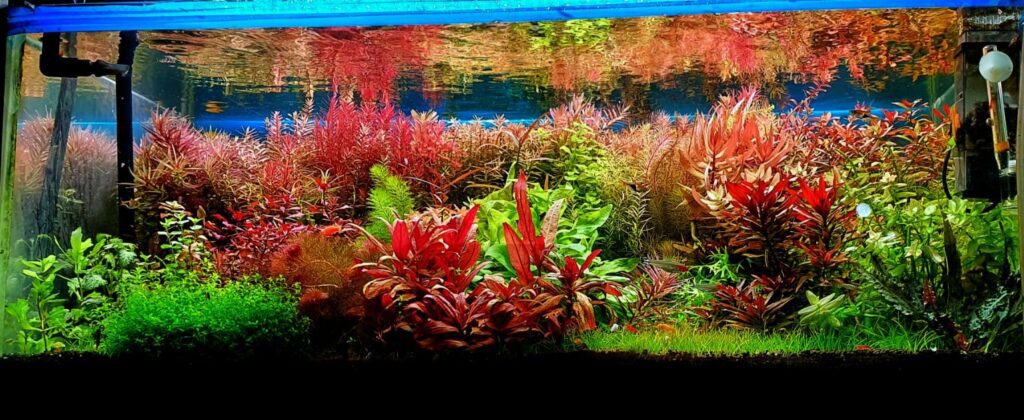The Ultimate Guide to Planted Aquariums
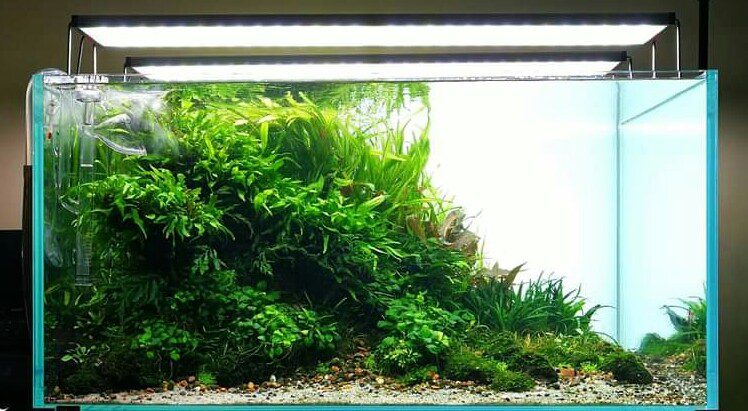
1: What Is a Planted Tank?
A planted tank is more than a fish tank — it’s a living, growing ecosystem. Instead of plastic décor, we use real aquatic plants to create a natural, self-sustaining environment for fish and invertebrates. Think: underwater garden meets peaceful aquarium. Whether you’re into lush jungles, neat Dutch-style layouts, or simple nature-inspired setups — planted tanks offer beauty, balance, and calm. 🐠🌱
2: What You Need to Start a Planted Tank
Don’t get overwhelmed — here’s your simple starter kit:
✅ A tank (60-80 liters is great for beginners)
✅ LED light (6–8 hrs/day)
✅ Substrate (nutrient-rich aquasoil or gravel + root tabs)
✅ Filter (sponge, internal or hang-on-back works)
✅ Heater (if keeping tropical fish)
✅ Live plants!
Optional: Liquid fertilizer, test kit, algae scraper Start small. Grow over time. Nature rewards patience. 🌿
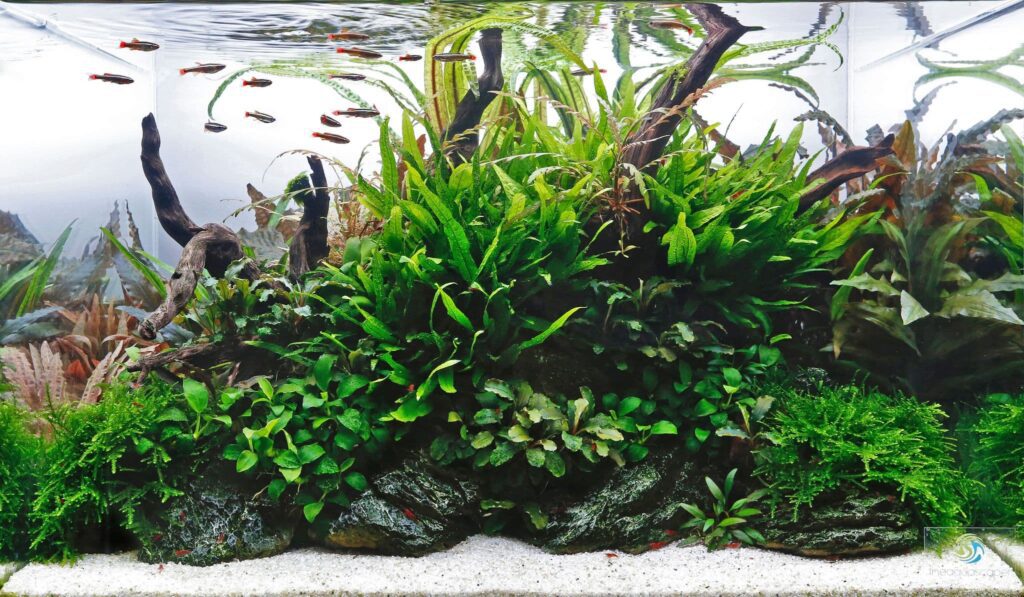

3: Best Beginner Plants for Planted Tanks
Don’t know what to plant? Start with these low-maintenance legends:
🌿 Java Fern – grows on driftwood or rocks
🌿 Anubias Nana – slow-growing, low light
🌿 Cryptocoryne Wendtii – great for midground
🌿 Amazon Sword – tall, dramatic, easy
🌿 Hornwort – floating or planted, fast grower
These thrive in low-tech tanks with basic light — no CO₂ needed! So, which one’s your favourite? 🌱
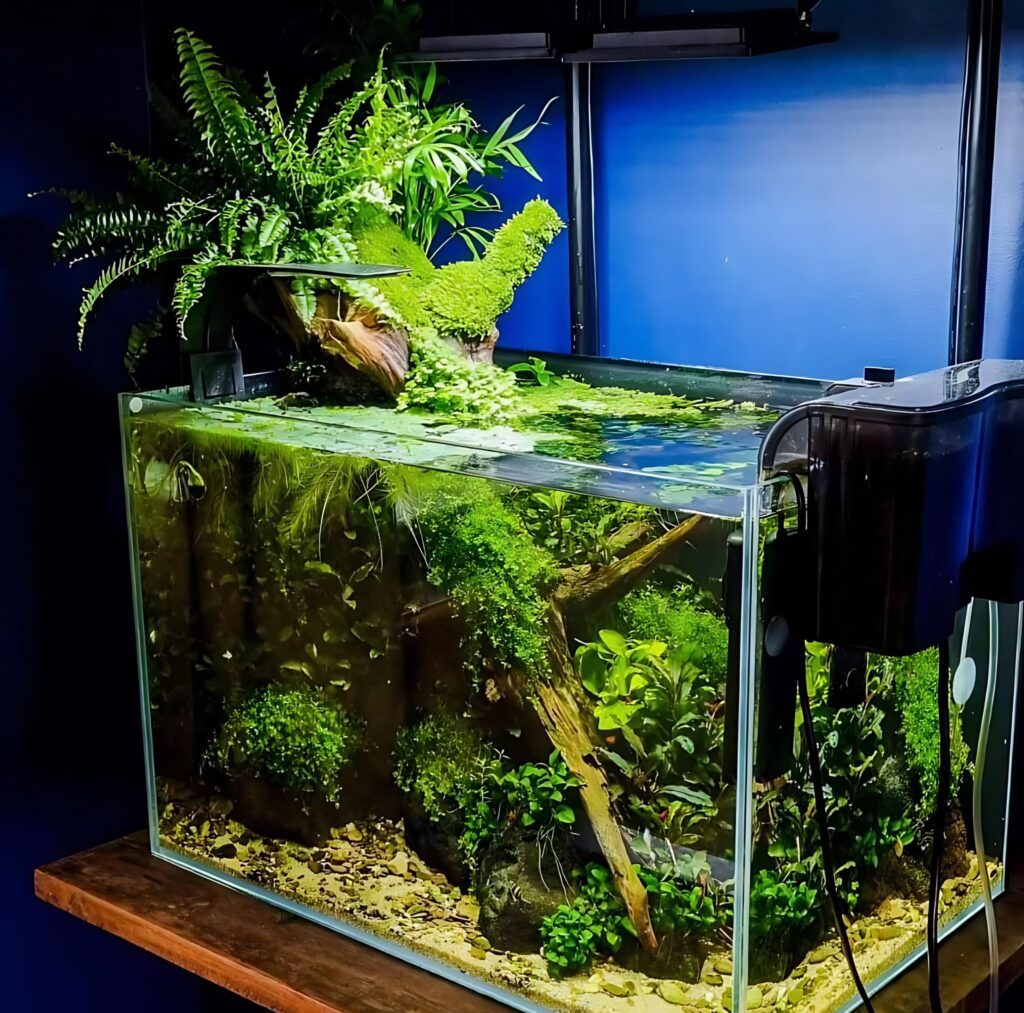
4: Light, Fertilizer, and Balance
💡 Lighting is your plant’s energy source — but balance is key!! 🌞 Use a basic LED light, 6–8 hours a day
💊 Dose fertilizer weekly (liquid or root tabs)
🫧 Skip CO₂ unless you’re going high-tech
Too much light or ferts = algae. Keep it simple, go slow, observe. Nature will tell you when something’s off. You just have to watch. 👀🌿
5: Weekly Care Routine (Low-Tech Friendly)
Here’s how to keep your planted tank healthy with just 15 mins/week:
🔁 Top off evaporated water daily
💧 Change 25%–30% water every week
🌱 Trim dead leaves or overgrowth
💊 Add fertilizer if needed
🔍 Check filter & observe fish behavior
Consistency > perfection. The more natural your tank feels, the more it thrives. 🌊
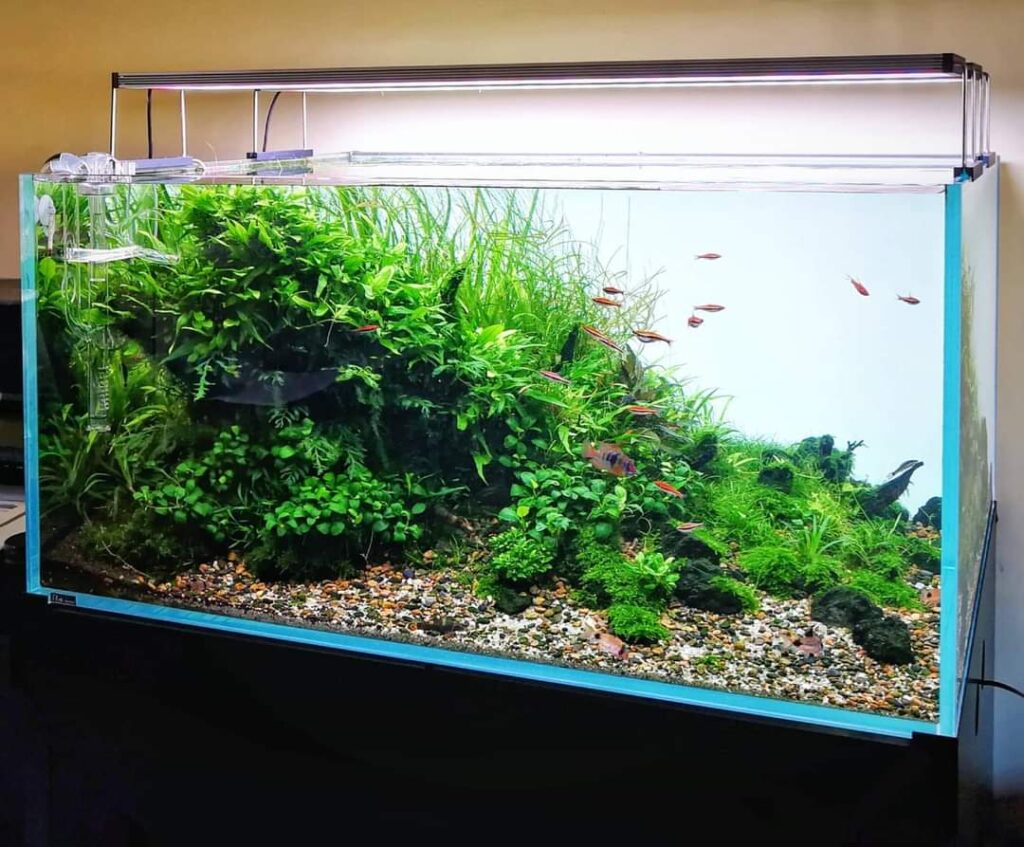
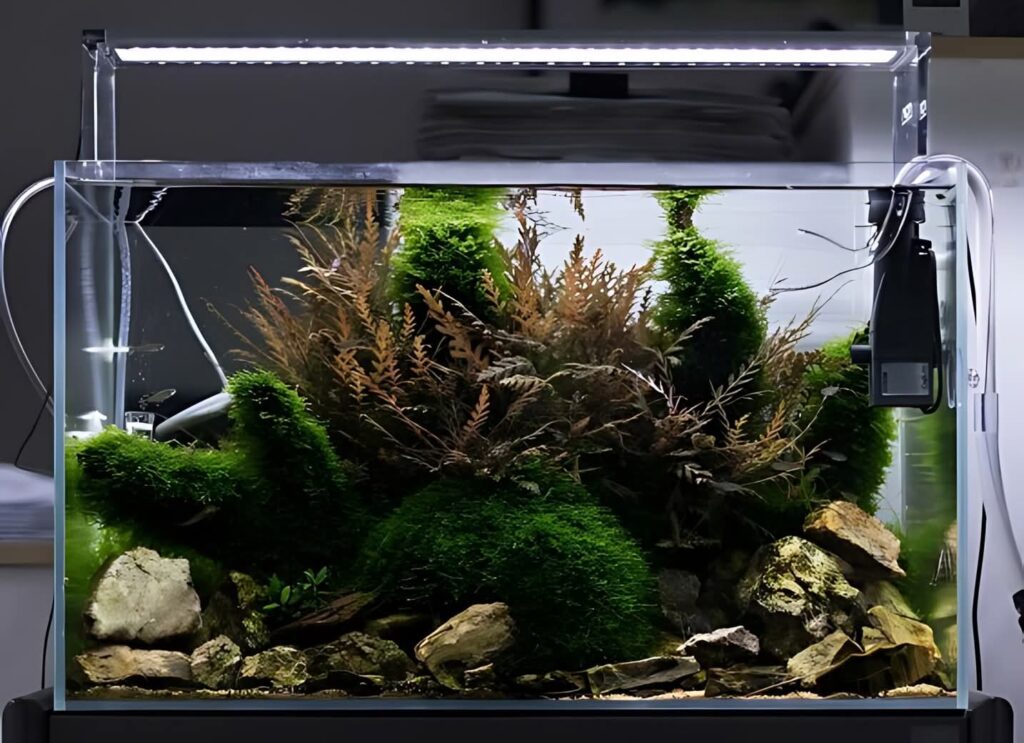
6: You Don’t Need Fancy Gear to Start
Planted tanks don’t have to be expensive or complicated. Many beautiful setups use just:
✔️ Basic LED light
✔️ Inert gravel / sand
✔️ Hardy, slow-growing plants
✔️ Peaceful fish
✔️ No CO₂, no stress
It’s not about perfection — it’s about connection. With nature, and yourself.
🌿💚 Show us your planted tank journey, no matter what stage you’re in!
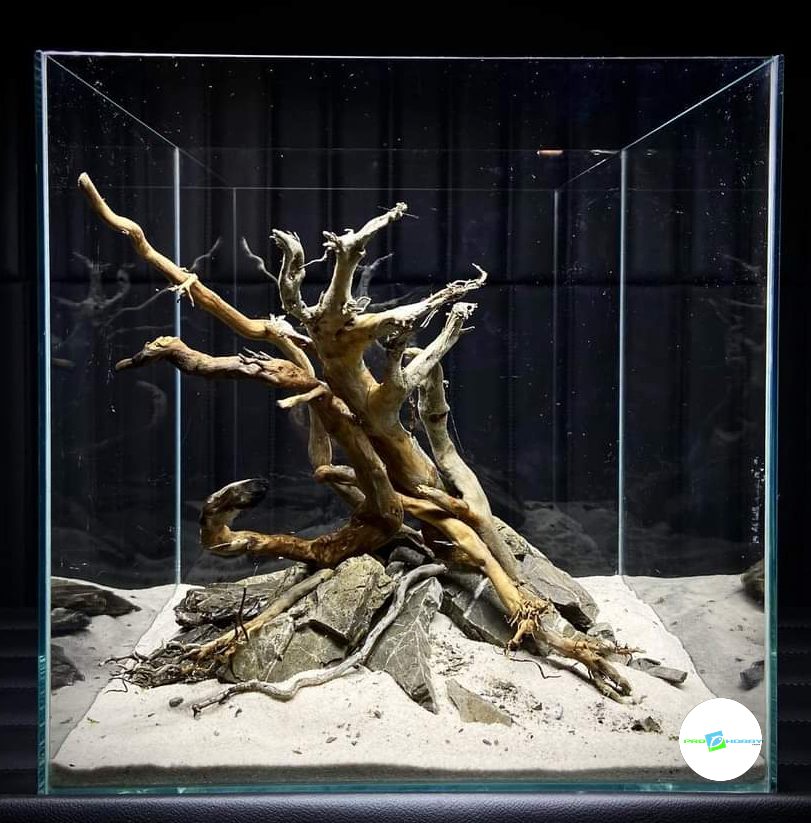
7: Hardscape – Rocks, Wood & Design Basics
Before you add plants, think structure! Hardscape = the bones of your aquascape.
It includes:
🪵 Driftwood – natural, great for attaching plants 🪨
🪨 Stones, rocks, pebbles – create flow & focal points
🎭🌿 Tip: Stick to the “rule of thirds” and avoid symmetry for a natural feel. Build your hardscape first, then plant around it. It’s like setting the stage for your living world.
8: Fish & Critters That Love Planted Tanks
Some fish absolutely thrive in planted environments:
🐟 Tetras
🐟 Rasboras
🐟 Barbs
🐟 Corydoras
🐟 Guppies
🦐 Shrimps
🐌 Snails
Avoid plant-destroyers like goldfish, large cichlids, or plecos. Keep it peaceful, keep it planted.
🐠🌱 What’s your dream stocking list?
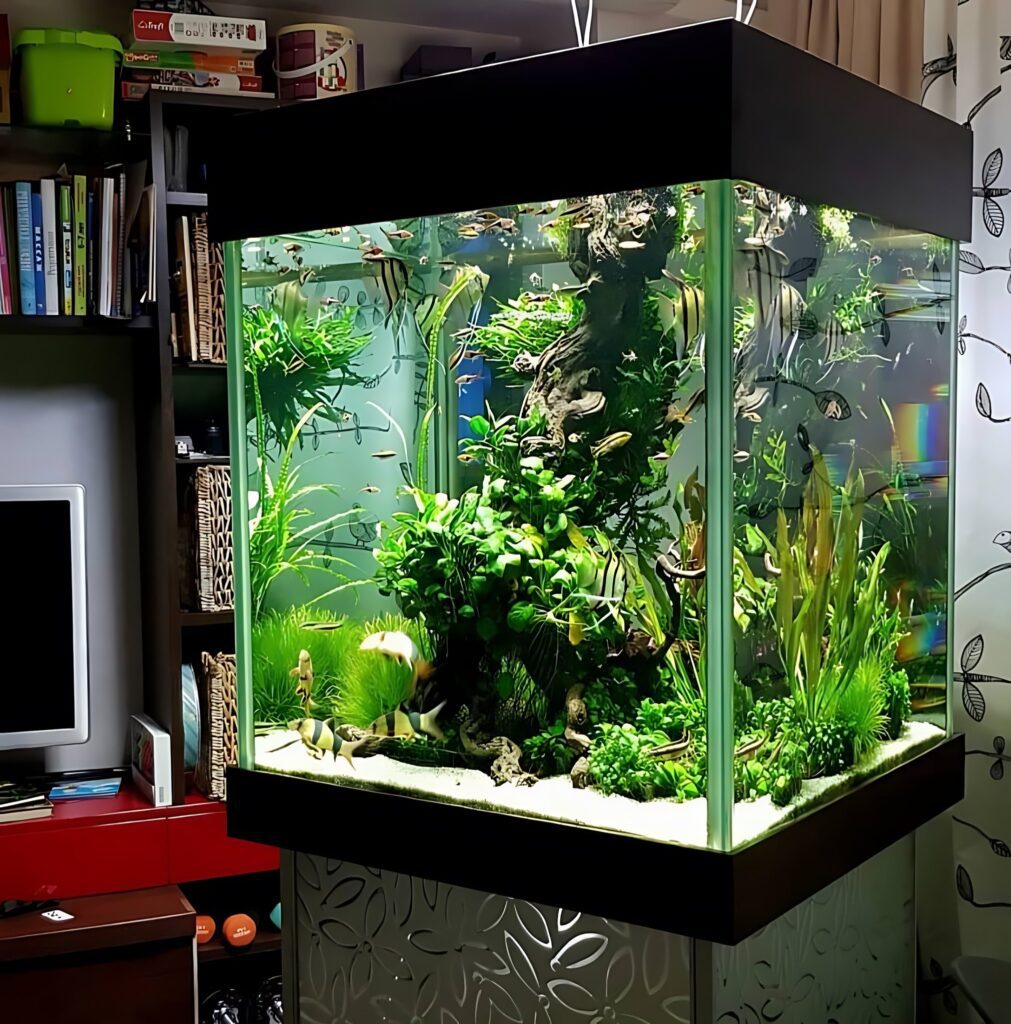
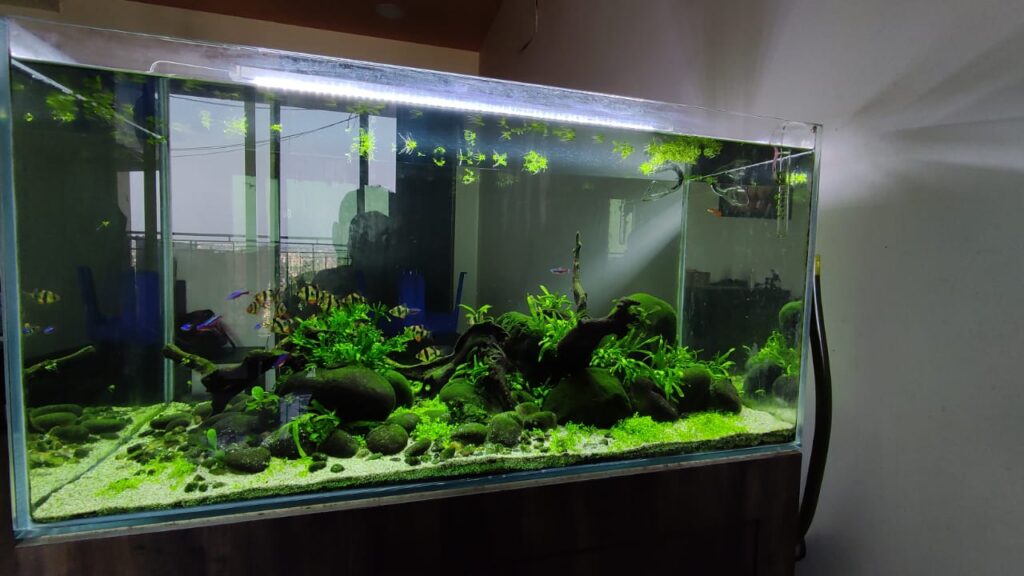
9: Algae – Friend, Foe, or Both?
Got algae? Don’t panic — it’s part of the process. Common types:
🟢 Green spot algae – often from too much light
🧼 Brown diatoms – normal in new tanks
💚 Hair algae – from excess nutrients or CO₂ imbalance
✅ Keep a regular schedule
✅ Don’t overfeed
✅ Add algae-eaters (like Ottocinclus or Amano shrimp)
Balance = the best algae control. Don’t chase perfection.
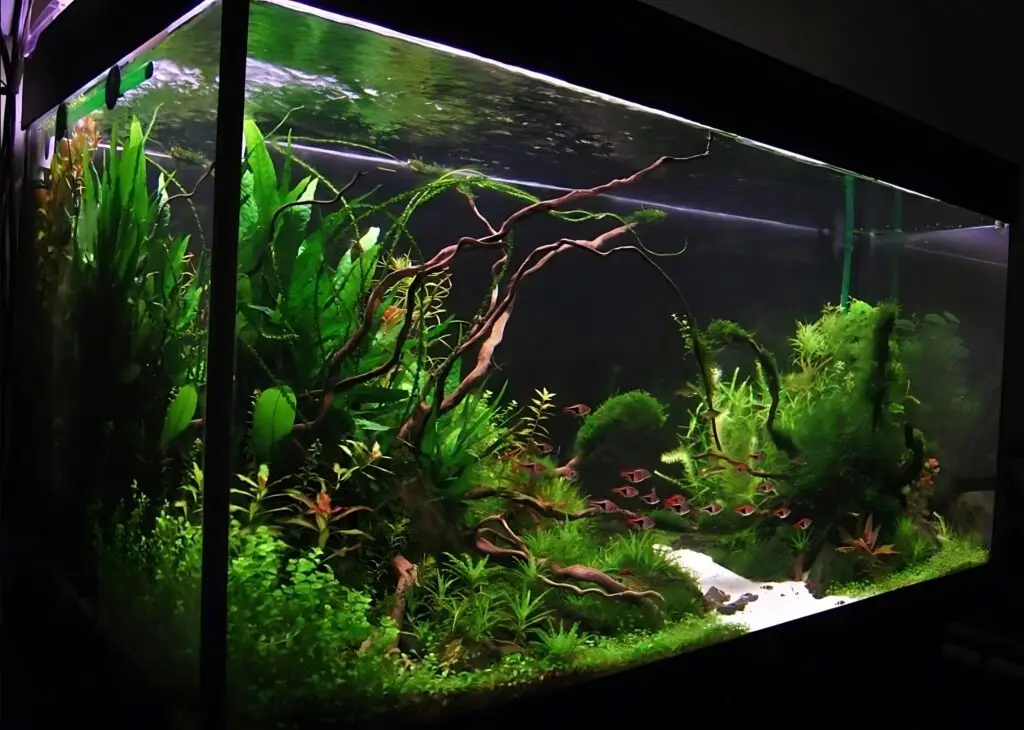
10: How to “Cycle” Your Planted Tank
Before adding fish, your tank needs to cycle — that means building good bacteria to break down waste. In planted tanks, plants actually help with cycling! Cycle basics:
🔄 Add plants first
🧪 Add ammonia source – fish food or pure ammonia (skip if using nutrient-rich aquasoil)
🔬 Monitor ammonia → nitrite → nitrate
⏳ Takes 4–6 weeks (faster with “seeded” media)
Patience now = fewer fish losses later. Let nature do its work!
11: Budgeting a Planted Tank – What to Spend On Want to keep costs in check?
Here’s where to spend & save:
💸 WORTH IT:
✔️ Quality light (not expensive, just decent spectrum)
✔️ Enriched substrate or root tabs
✔️ Healthy plants & fish
💸 SAVE ON:
❌ CO₂ systems (not needed for low-tech setups)
❌ Fancy test kits (use basic strips early on)
❌ Expensive accessories — DIY or basic !
🌿🌿 Start smart, grow slow. You can always upgrade later.
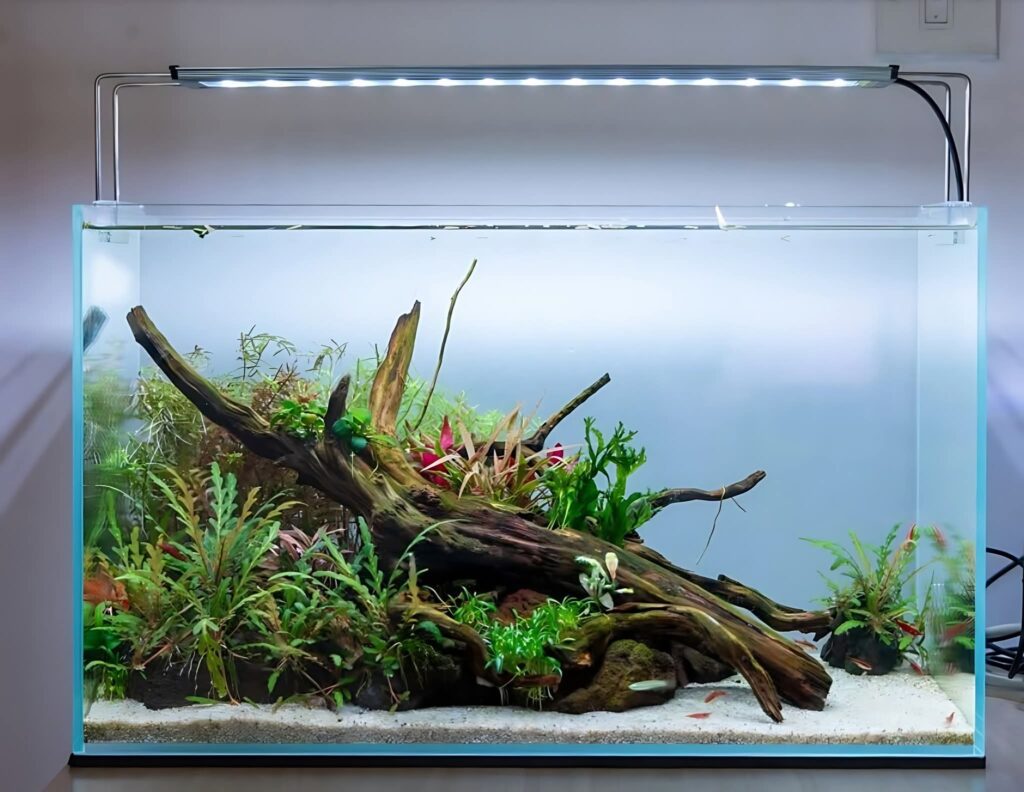
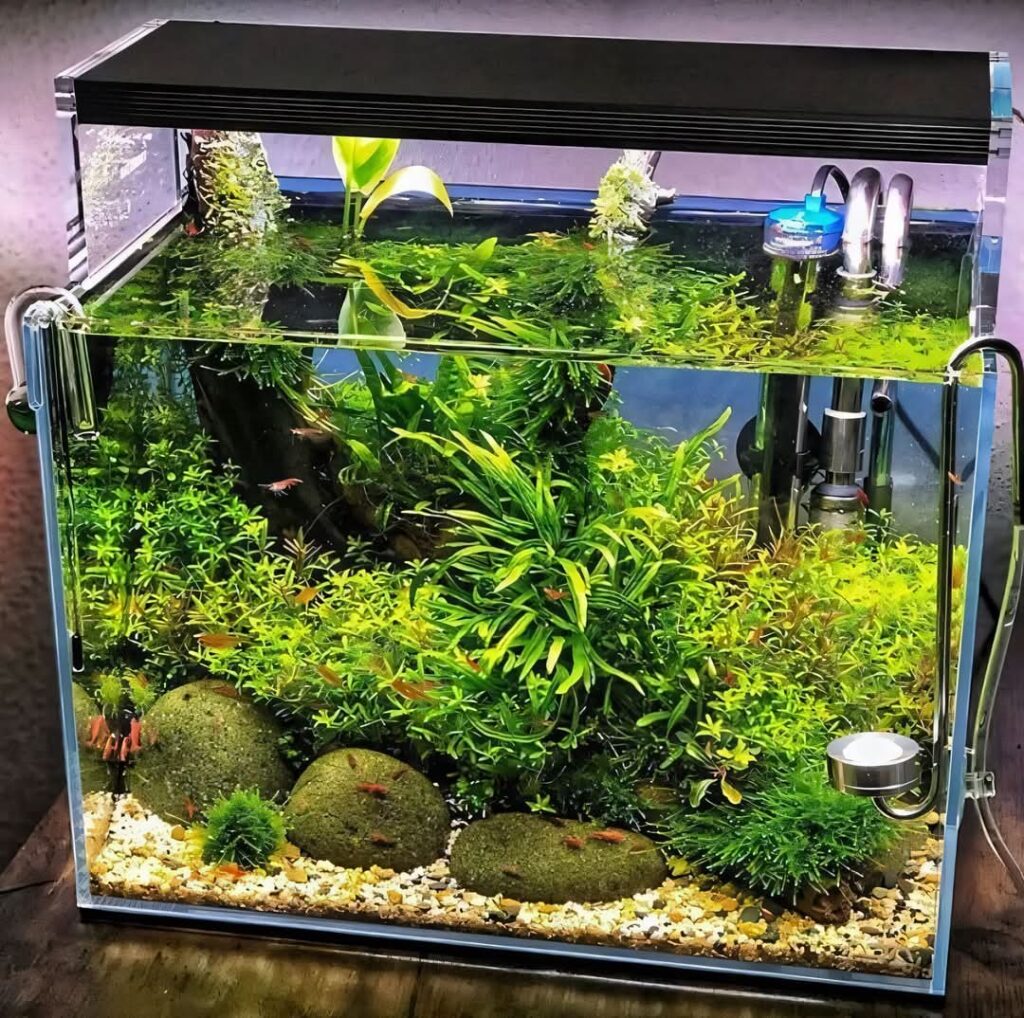
12: The Mental Health Side of Planted Tanks
This hobby isn’t just pretty — it’s powerful.
🌱 Watching plants sway
🐟 Observing peaceful fish
💧 Hearing the soft filter flow
🧠 It all helps reduce stress, anxiety, and screen fatigue.
Planted tanks are a form of natural therapy! Water your mind while you water your plants. 💚
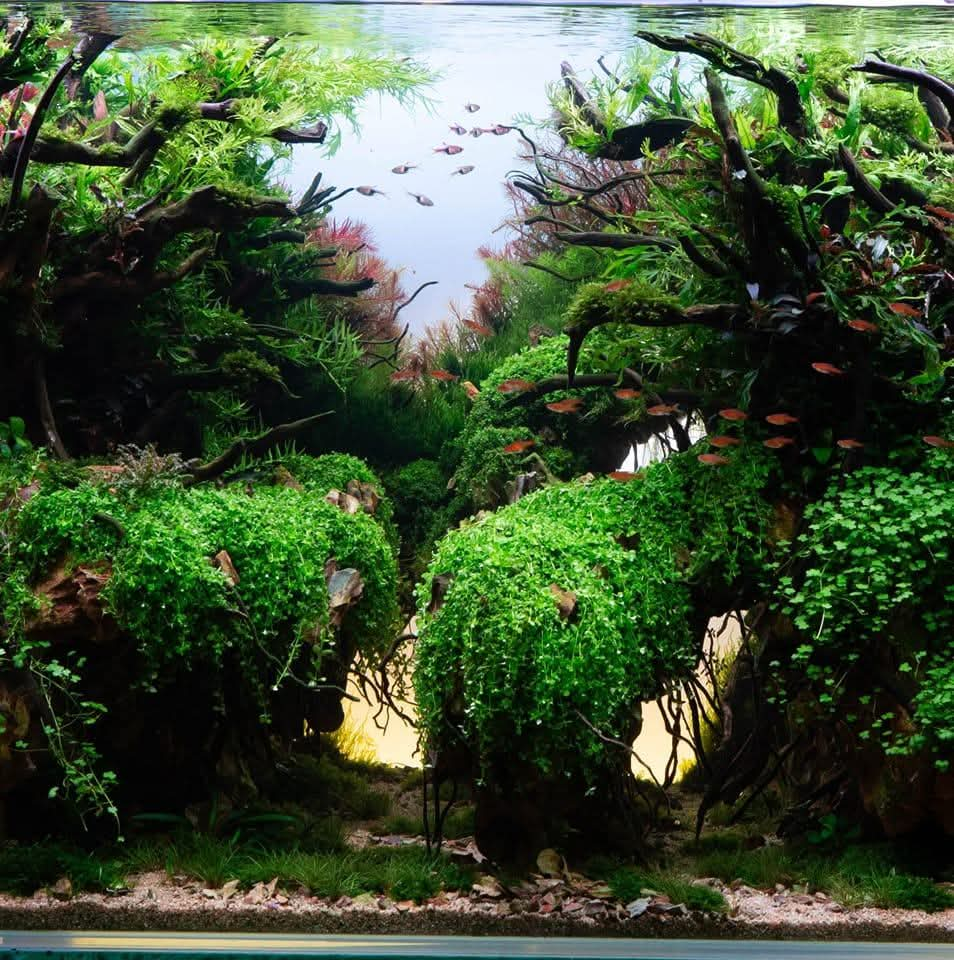
13: What to Expect in the First 3 Months
Month 1:
🌿 Plants adjust, maybe melt back
🧪 Tank cycles, water may be cloudy
🐌 Snail boom? Totally normal
Month 2:
🌱 New growth appears
🐠 Light fish stocking begins
🧽 Algae shows up — you’re learning balance
Month 3:
✨ Tank stabilizes
🌾 Plants fill in
😌 You start relaxing and enjoying the view.
It’s a journey, not a sprint. Stick with it — beauty takes time.
14: What Are “Carpeting Plants” – And Can You Grow Them Without CO₂?
Carpeting plants form a lush green “lawn” at the bottom of your tank. Popular choices include:
🌿 Dwarf Hairgrass
🌿 Dwarf Sagittaria (great for low-tech tanks!)
🌿 Marsilea Hirsuta (slow but steady)
🌿 Monte Carlo (likes CO₂ but can work without it)
🌿 Glossostigma (high-tech usually)
✅ Use fine substrate
✅ Moderate to strong light
✅ Keep trimmed for horizontal growth
Bonus tip: Start with dry-start method for faster results!
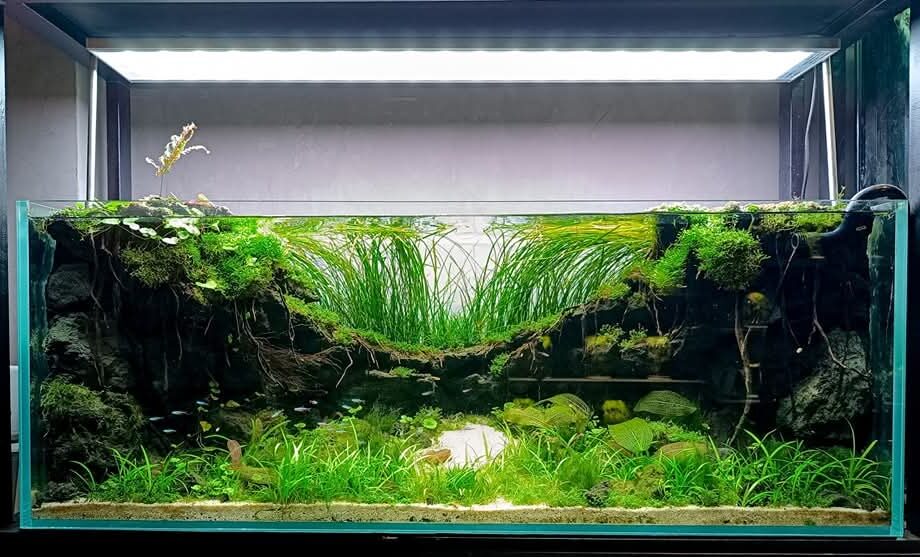

15: Aquascaping Styles – Which One Is for You?
🧱 Iwagumi – Minimalist, stones are the stars
🌿 Nature Style – Inspired by forests, valleys, rivers
🌸 Dutch Style – Dense, colorful plants, no hardscape
🌴 Jungle Style – Wild, untamed, full of texture
🌱 Biotope – Mimics a real natural environment exactly
Each style tells a different story! Which one are you drawn to?
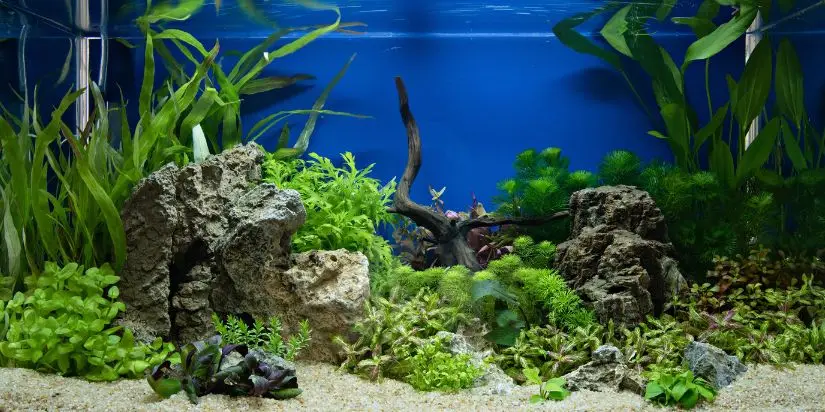
16: Why Are My Plants Melting After Planting?!
Relax — it’s normal. Here’s why:
🌱 Many aquarium plants are grown “above water” (emerged) in farms
🌊 When submerged, they melt as they adapt to underwater growth
✅ Trim dead leaves
✅ Keep lighting & ferts consistent
✅ New growth will come in! Melting isn’t dying — it’s adapting. Let them grow.
💚 Bonus Tip: Use only submerged grown plants to avoid plant melt.
17: Don’t Trust the Label – “Aquarium Safe” Isn’t Always Safe
Many decorations or substrates labeled “aquarium safe” can still:
🚫 Leach unwanted chemicals
🚫 Raise pH or hardness
🚫 Be toxic to fish, shrimp and snails
✅ Stick with trusted brands
✅ Rinse everything
✅ Research before you drop it in!
🧪 Your planted tank is a living system — protect it like a garden.
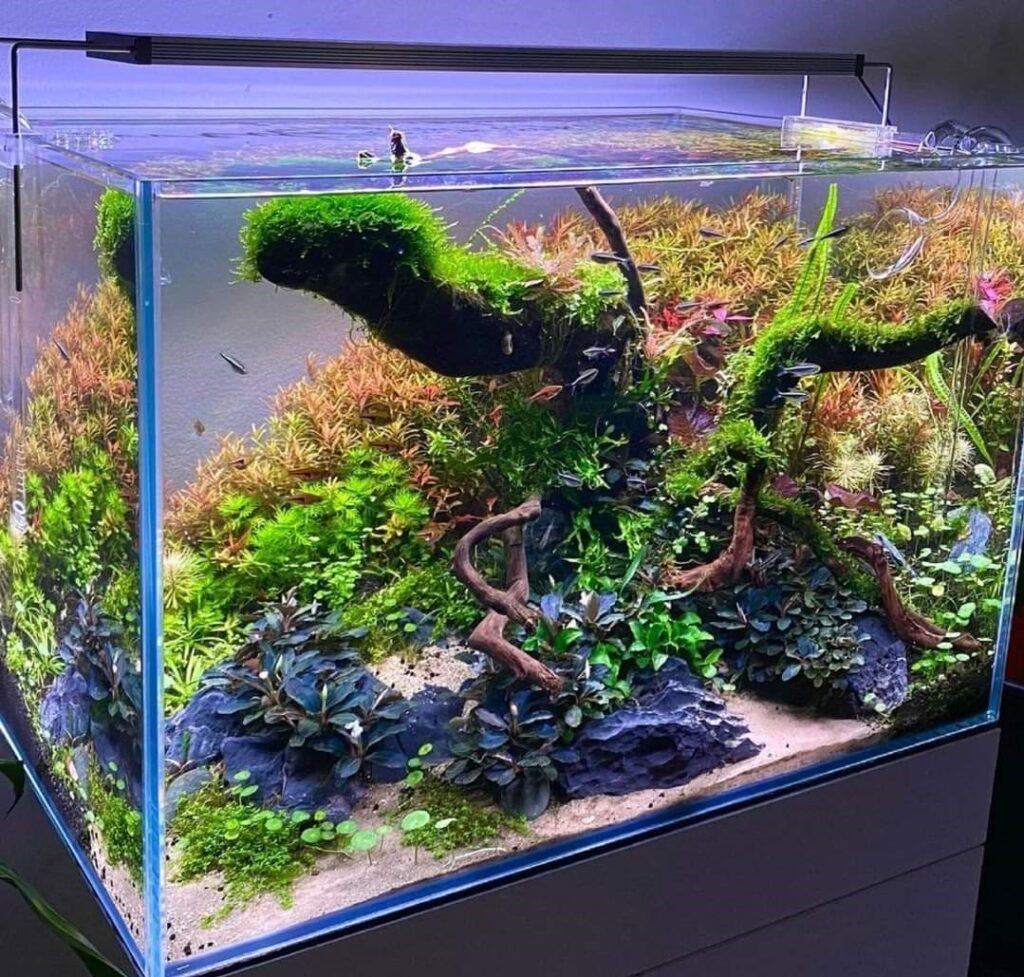
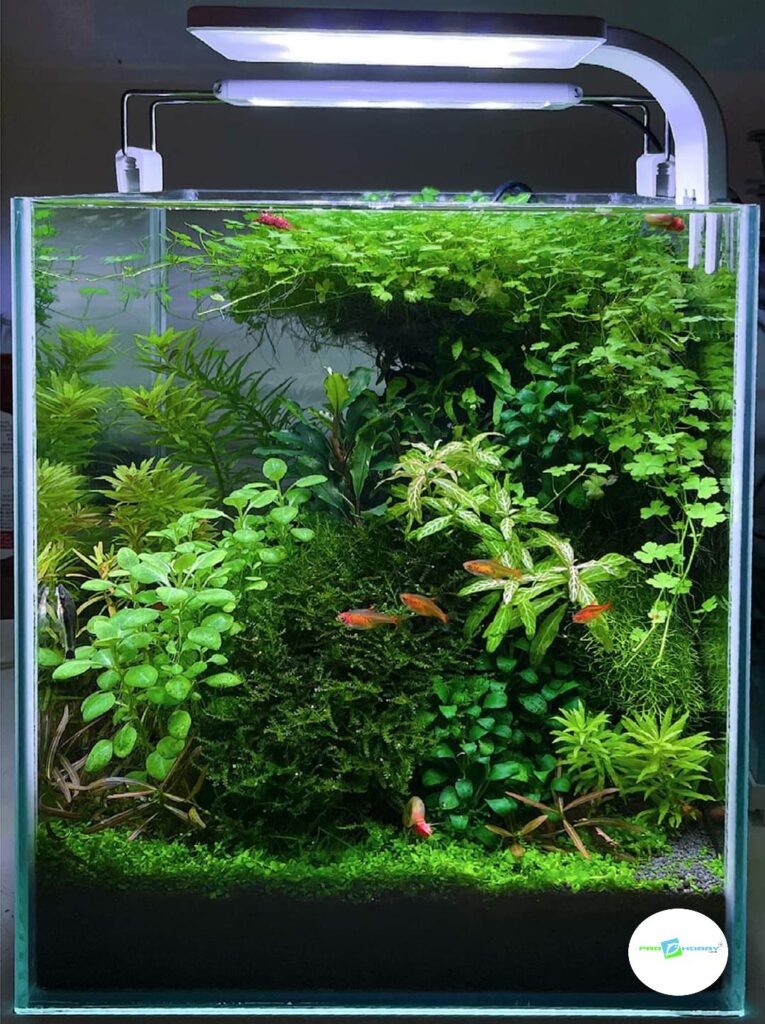
18: CO₂ vs. No CO₂ – What’s the Real Difference?
CO₂ injection gives:
⚡ Faster growth
⚡ Ability to grow “demanding” plants
⚡ Tighter control of aquascape shape
⚡ Brings out colors better
But it also means:
🧪 Higher risk of imbalance
💸 More equipment, more cost
⏱️ More daily attention
🧽 Algae blooms
No CO₂ = slower but peaceful growth, low-maintenance beauty. You don’t need pressurized gas to grow joy. Pick the path that fits your life.
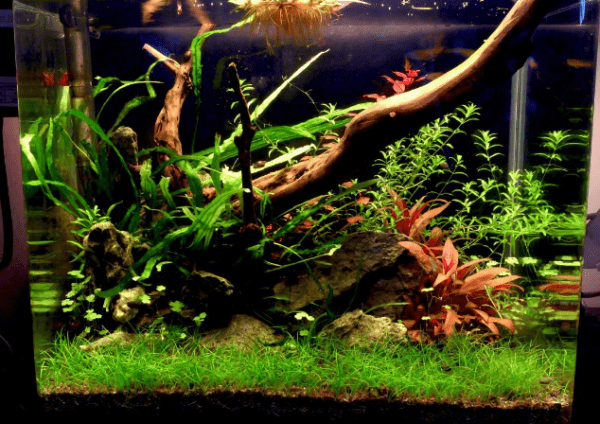
19: Diagnosing Sick Plants – The Quick Guide
📉 Yellow leaves? → Low nitrogen
📉 Pale new leaves? → Iron deficiency
📉 Holes in leaves? → Potassium deficiency
📉 Stunted growth? → Root problem or poor light
🧪 Always rule out water quality and light first. A healthy tank = healthy plants = happy fish. 🐠🌿
😄 Think like a plant doctor — it’s more fun than it sounds.
20: Resetting a Planted Tank – When & Why?
Sometimes tanks crash or just don’t turn out as you hoped. Resetting might help when:
🧼 Algae has taken over
🥀 Plants keep dying despite changes
📐 You want a new layout or hardscape
If you reset:
✅ Save what plants you can
✅ Keep your beneficial bacteria (filters, substrate)
✅ Rebalance lighting/ferts from the start
REMEMBER: Resets aren’t failures — they’re fresh starts. 🌿
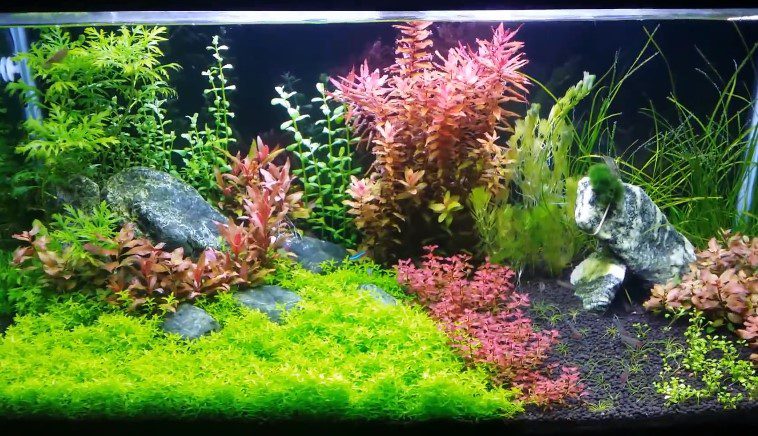
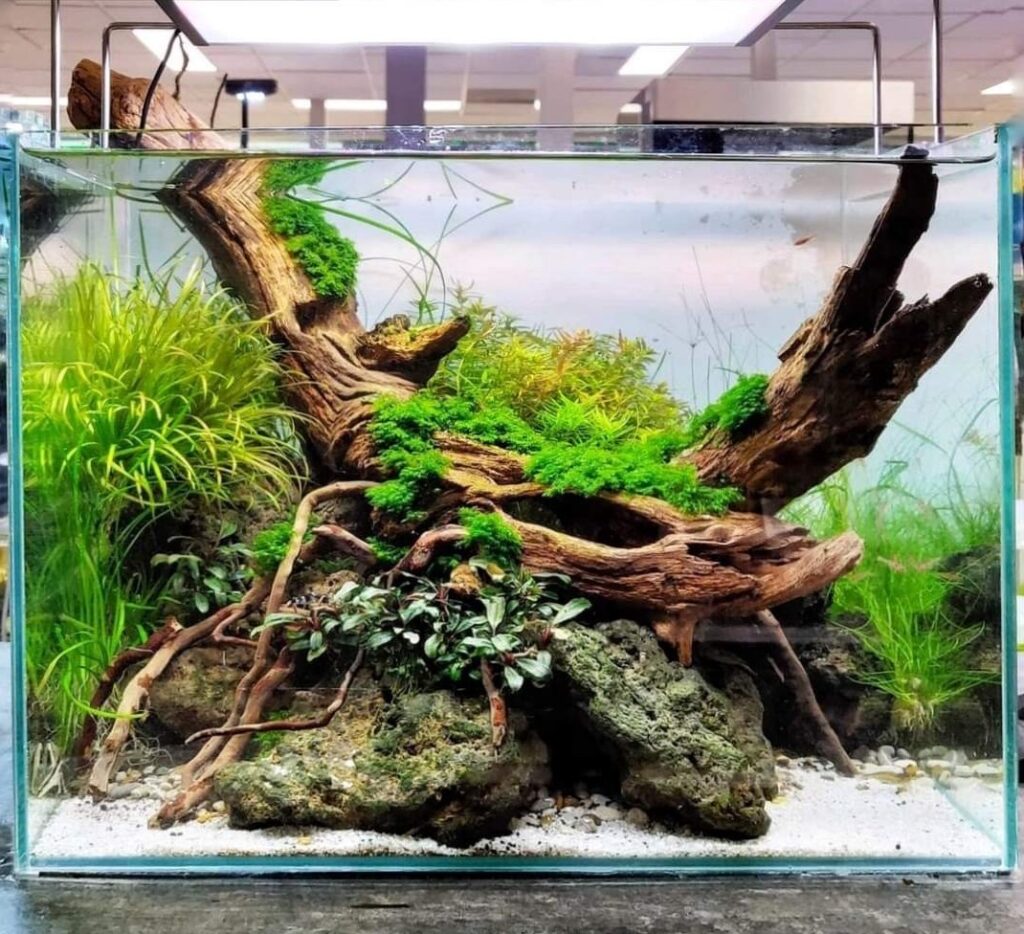
21: Low-Tech, High Beauty – Welcome to the Simpler Side of Aquascaping
Think you need fancy gear or pressurized CO2 to enjoy a planted tank? Think again!
💚 Low-tech aquariums are all about balance, simplicity, and beauty — no high-maintenance gadgets needed.
🌿 Over the next few posts, we’ll walk you through how to set up and care for a stunning, low-tech planted aquarium that thrives naturally. 🐠
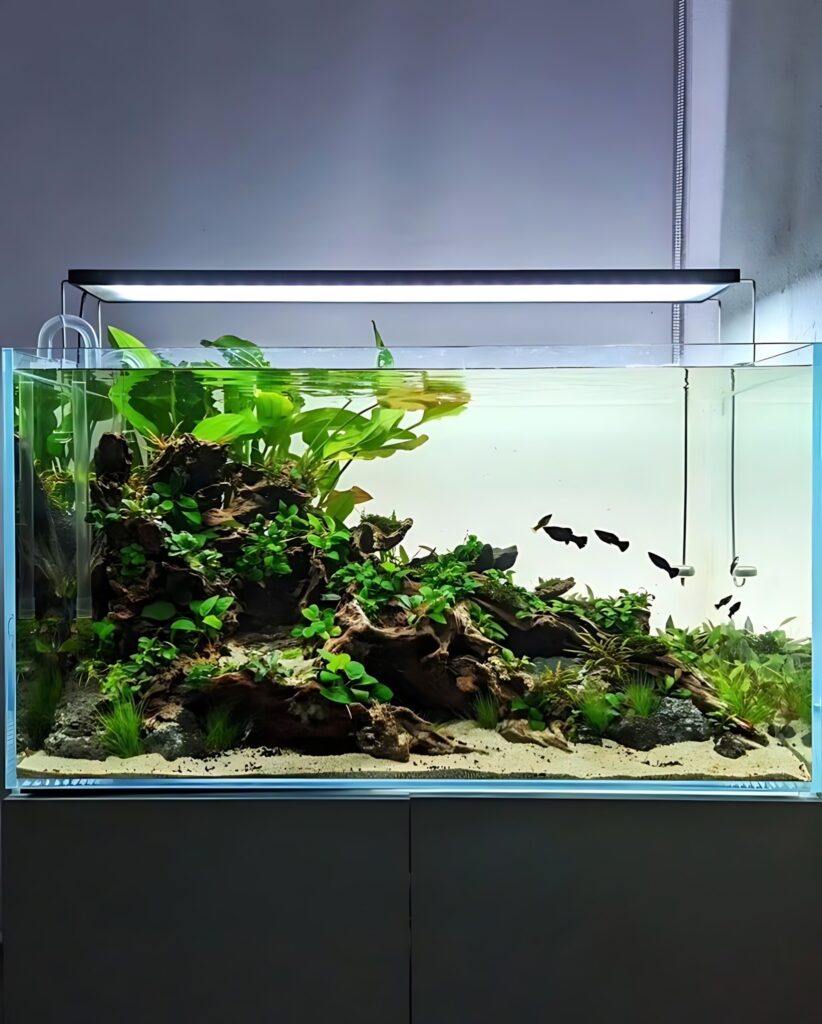
22: Why Go Low-Tech?
🌱 Low-tech planted tanks are perfect if you want:
✅ Less maintenance
✅ Lower energy use
✅ No CO2 injection or expensive lighting
✅ A more natural, balanced ecosystem
They’re ideal for beginners — or anyone who wants to enjoy the hobby without the hassle.
Less tech, more zen.
🌾 Have questions? Visit us — we’re here to help you grow!
23: Low-Tech Setup Essentials (No CO2, No Stress)
Here’s what you really need:💡
🔹 Tank: 60–80 liters (or more!)
🔹 Light: A basic LED aquarium light (6–8 hrs/day)
🔹 Substrate: Dirted under gravel/sand or enriched aquasoil
🔹 Filter: Sponge, internal or hang-on-back
🔹 Plants: Hardy, low-light species (more on that next!)
No fancy gear. Just consistency, light, and a little patience. 🌞🌿
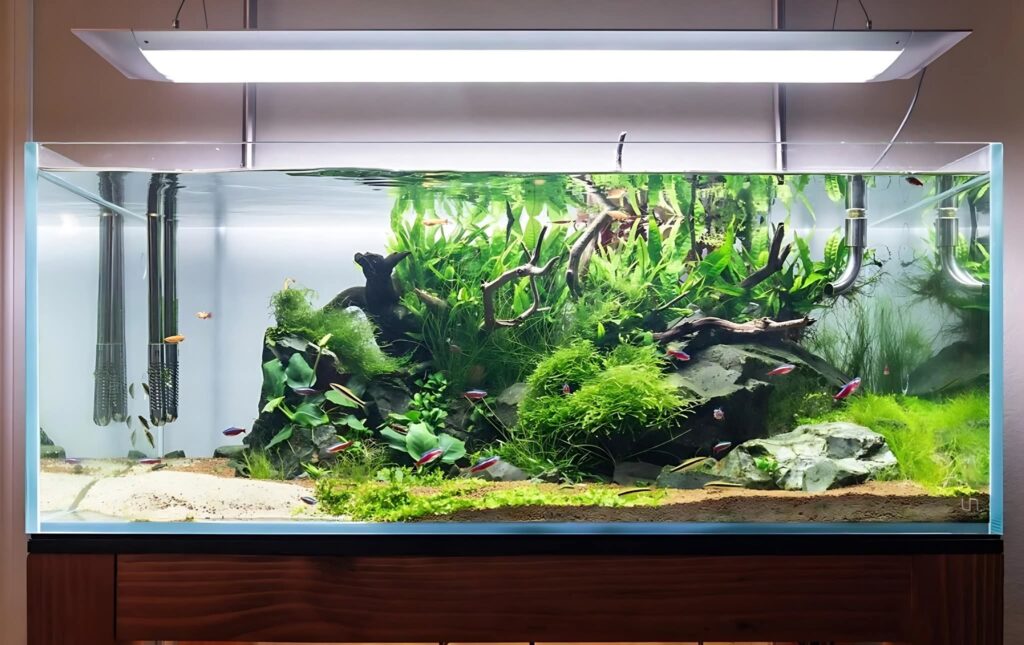
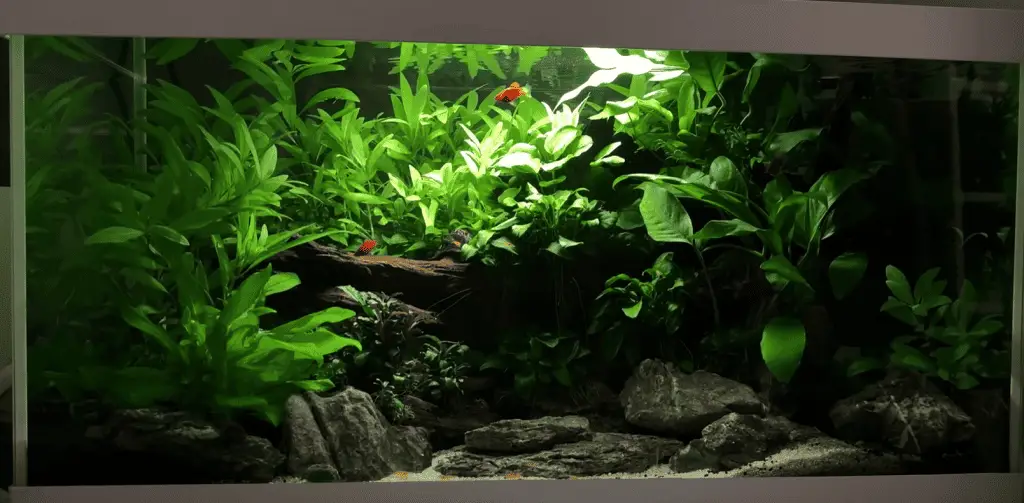
24: Top 5 Plants for Low-Tech Aquariums
🌾 Want a lush tank without CO2? Start with these:
1. Java Fern – grows on rocks/wood, super tough
2. Anubias Nana – slow grower, shade-loving
3. Cryptocoryne Wendtii – great for midground
4. Hornwort – no roots needed, absorbs waste
5. Water Wisteria – fast-growing, natural look
These plants thrive with minimal care and low light. Which one’s your favorite? 🌿
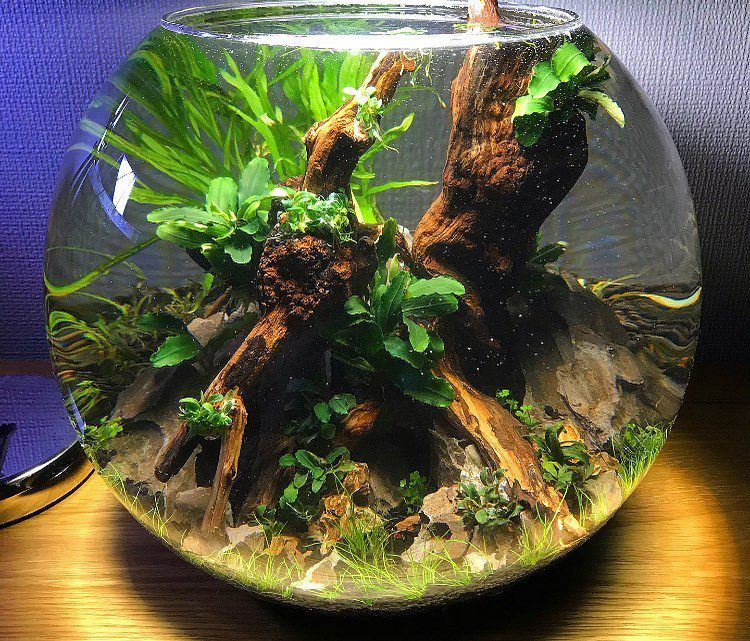
25: Fertilizing a Low-Tech Tank – Do You Need It?
Even without CO2, your plants need food!
💊 Use liquid fertilizers once/ twice a week
🌱 For rooted plants, add root tabs every few months
Less is more: don’t overdo it — slow and steady growth is ideal in low-tech tanks.
💧 Got questions about fertilizing your setup? Ask away!
26: Peaceful Fish for Low-Tech Planted Tanks
Low-tech tanks = low flow, low stress. These fish love that:
🐟 Ember Tetras
🐟 Galaxy Rasboras
🐟 Pygmy Corydoras
🐟 Amano Shrimp
🐟 Nerite Snails
Bonus: They won’t tear up your plants and help keep algae in check. Win-win! ✨
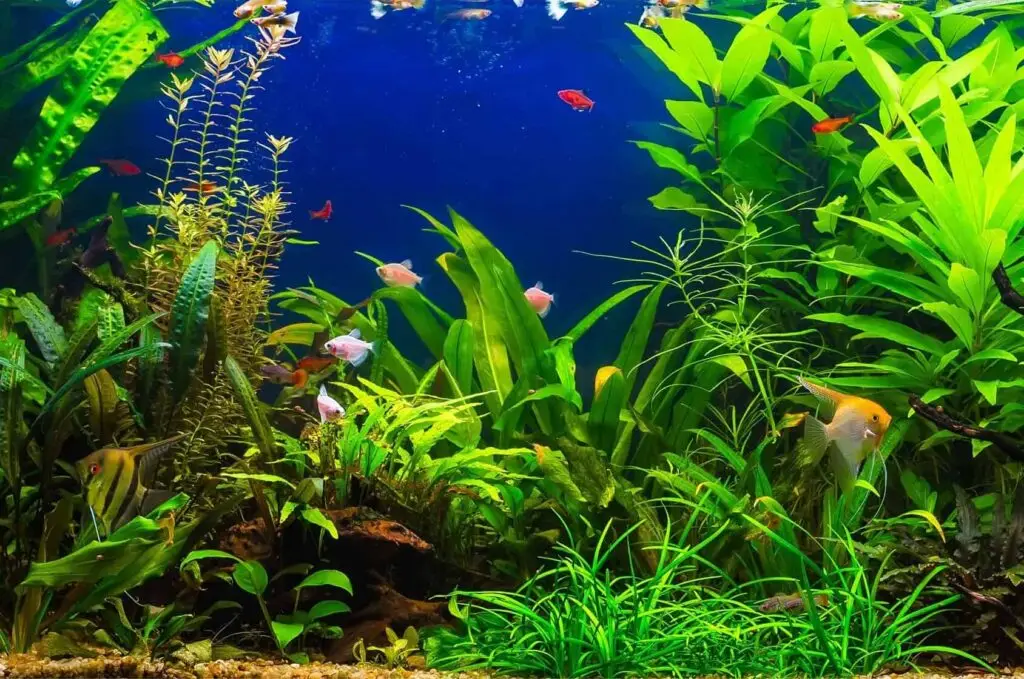
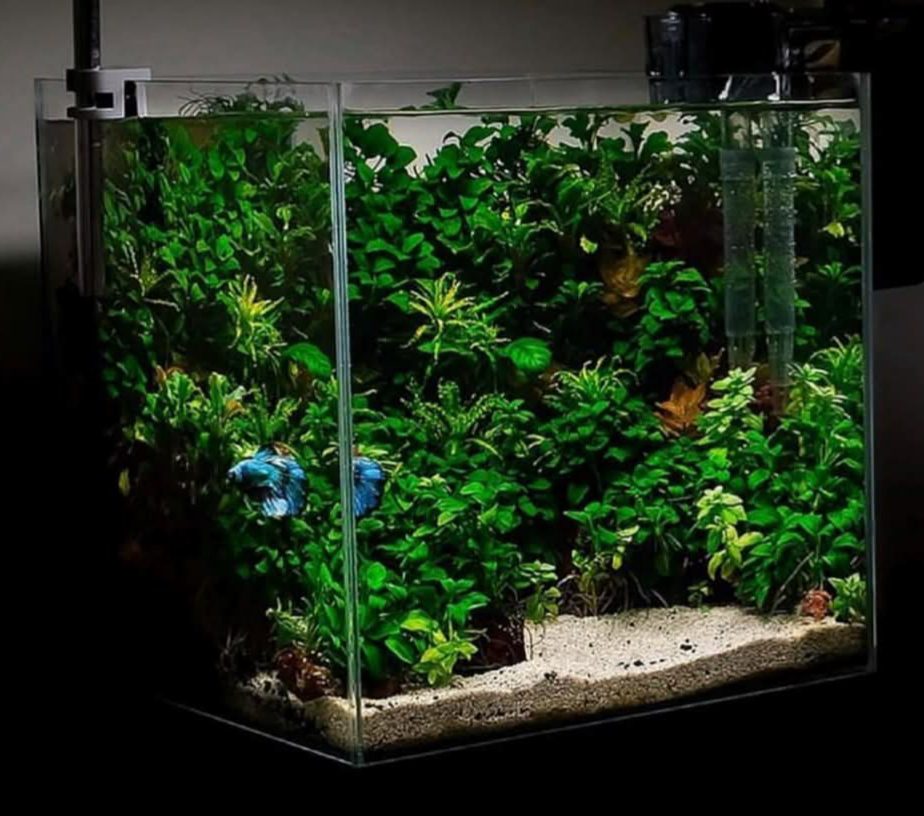
27: Weekly Care Routine + Algae Prevention for Low-Tech Tanks
Keeping a planted tank healthy doesn’t have to be a chore. Here’s a simple weekly checklist to keep your low-tech setup balanced and algae-free:
Weekly Routine:
✅ Top off evaporated water (use dechlorinated or RO water)
✅ Wipe the glass (use an algae magnet or soft sponge)
✅ Dose liquid fertilizer
✅ Trim dead leaves — helps prevent decay and algae
✅ Check filters for any clogs or slow flow
Every 2 Weeks:
♻️ Change 20–30% of the water
🌿 Replant or thin out fast growers
📏 Test water if something seems off (ammonia, nitrate, etc.)
Algae Prevention Tips:
❌ Don’t leave lights on longer than 8 hours
❌ Don’t overfeed your fish
✅ Add algae eaters like Ottos and Amano shrimps
✅ Avoid sudden changes in light, ferts, or fish load
Consistency is the real secret to success in low-tech aquascaping. Keep it calm, keep it green. 💚
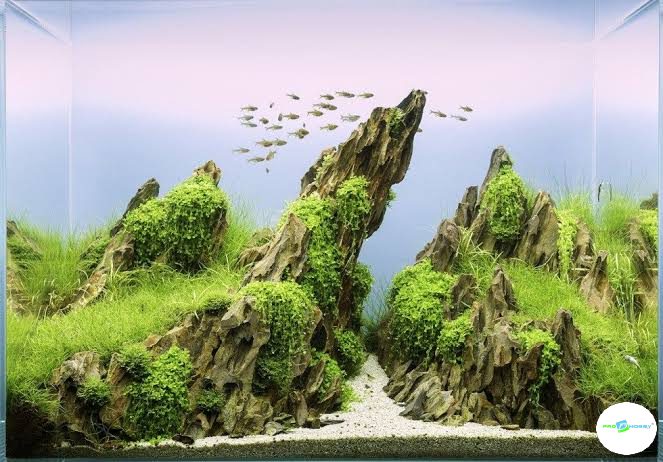
28: ❌🌿 Myth 1: – You have to use CO₂ to grow plants.
Truth: Many aquatic plants grow beautifully without added CO₂! Low-tech tanks with the right plants (like Java Fern, Anubias, Crypts) can thrive using just light and a little fertilizer. CO₂ helps plants grow faster — but it’s not a must for success!
Go low and slow. Nature works just fine on its own. 🌿✨
29: 💡🐠 Myth 2: – You need expensive lights for plant growth.
Truth: Basic full-spectrum LED lights work perfectly in most cases! You don’t need high-output or pro-tier lighting to enjoy a thriving planted tank. Many budget-friendly aquarium lights support low- to medium-light plants just fine — just run them 6–8 hours a day.
Save your money and grow smart. 🌱💡
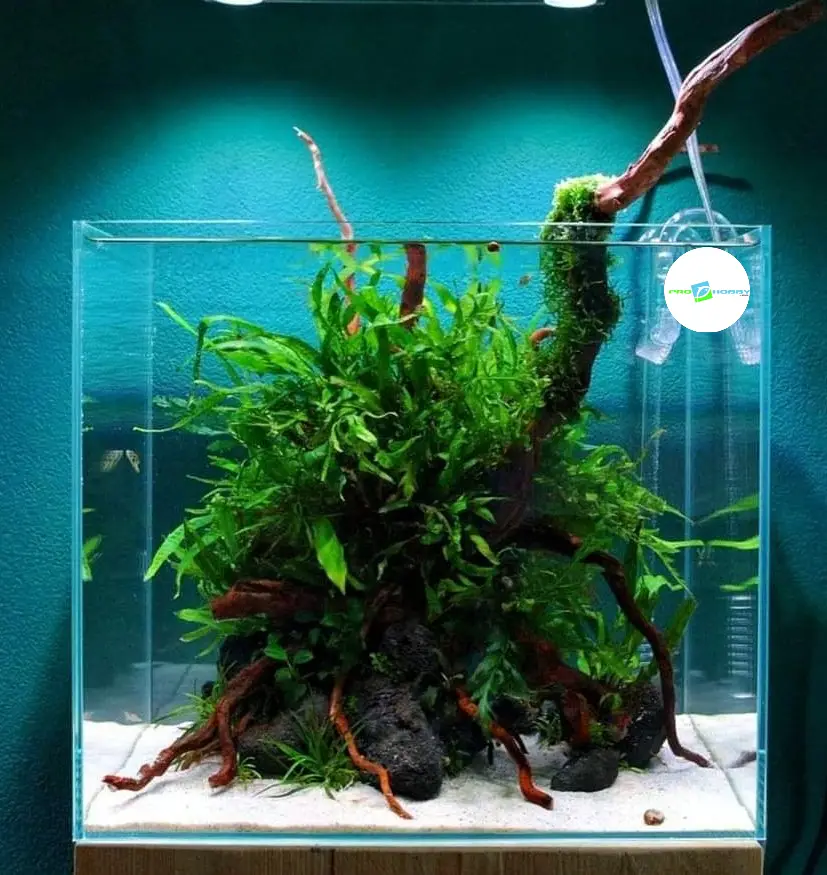
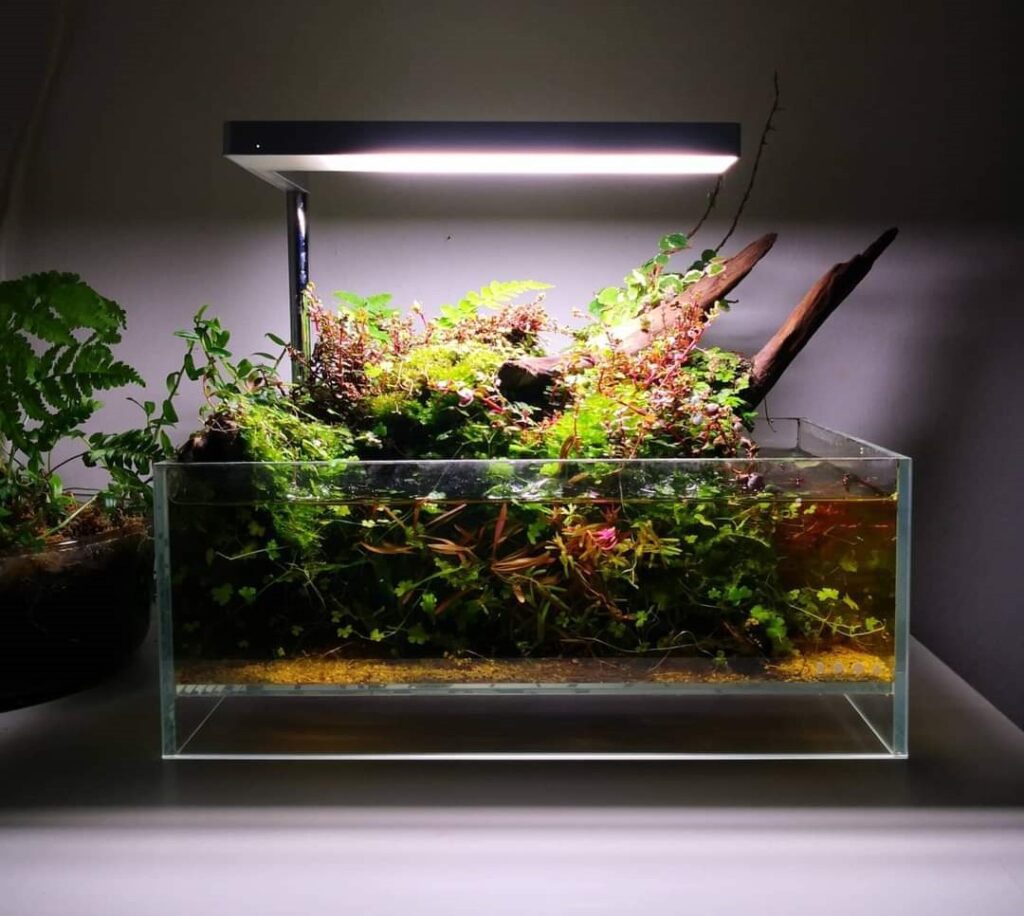
30: 🐌🌱 Myth 3: – Snails are pests — get rid of them!
Truth: Most aquarium snails are actually your allies. Bladder snails, nerites, and ramshorns help eat algae, clean up uneaten food, and keep your tank balanced. Sure, they reproduce fast if overfed — but that’s a feeding issue, not a snail problem.
Snails = tiny tank janitors. Don’t hate, appreciate! 🐌💚
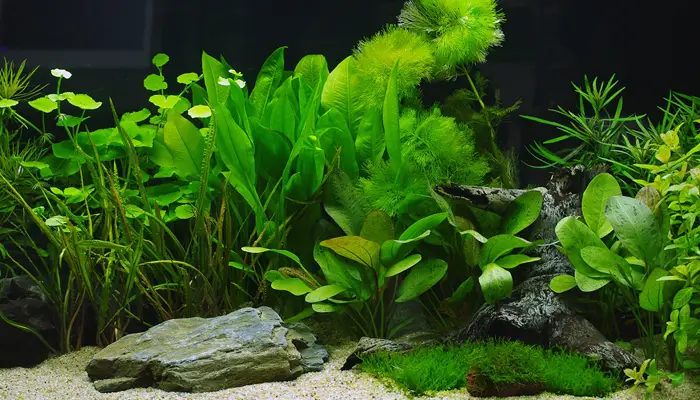
31: ⛔ Myth 4: Gravel won’t grow plants.
Truth: Many rooted plants grow fine in gravel — with a little help. If you use root tabs (fertilizer capsules), even basic gravel can support heavy root feeders like Amazon Swords and Crypts.
Bonus tip: carpeting plants prefer finer substrate, but it’s not all or nothing. It’s not the gravel, it’s how you use it. 😉
32: 🧪❌ Myth 5: – You need to constantly test your water.
Truth: Routine testing is great — but not obsessive testing. In a balanced low-tech tank with stable stock and plants, biweekly water tests are more than enough. The plants themselves are natural indicators of your tank’s health.
🔍Test smart! Trust your tank!! 🌊
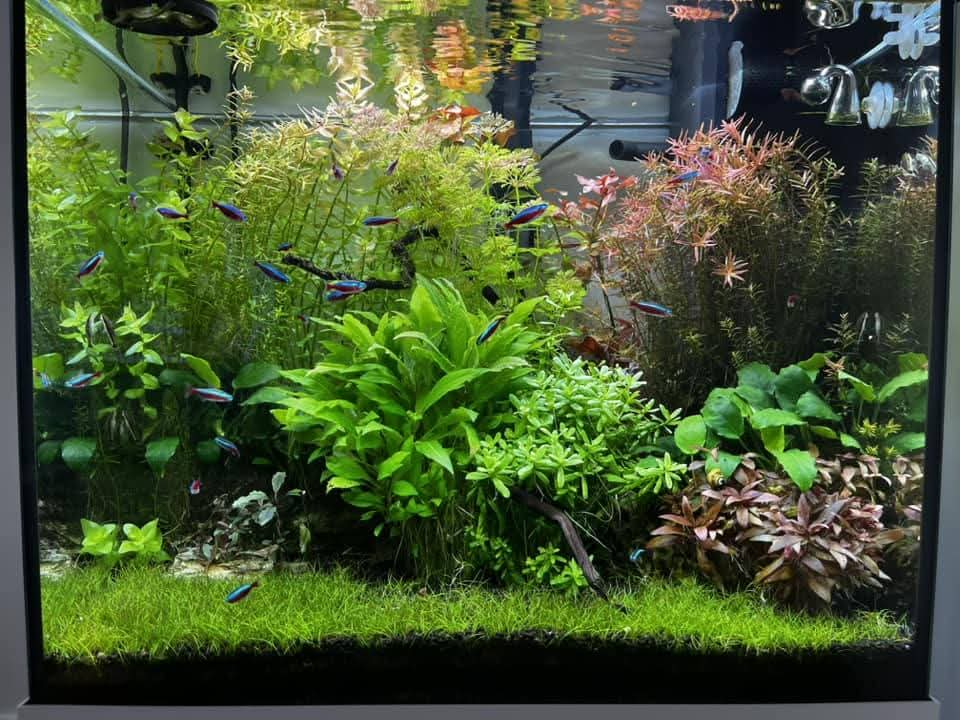
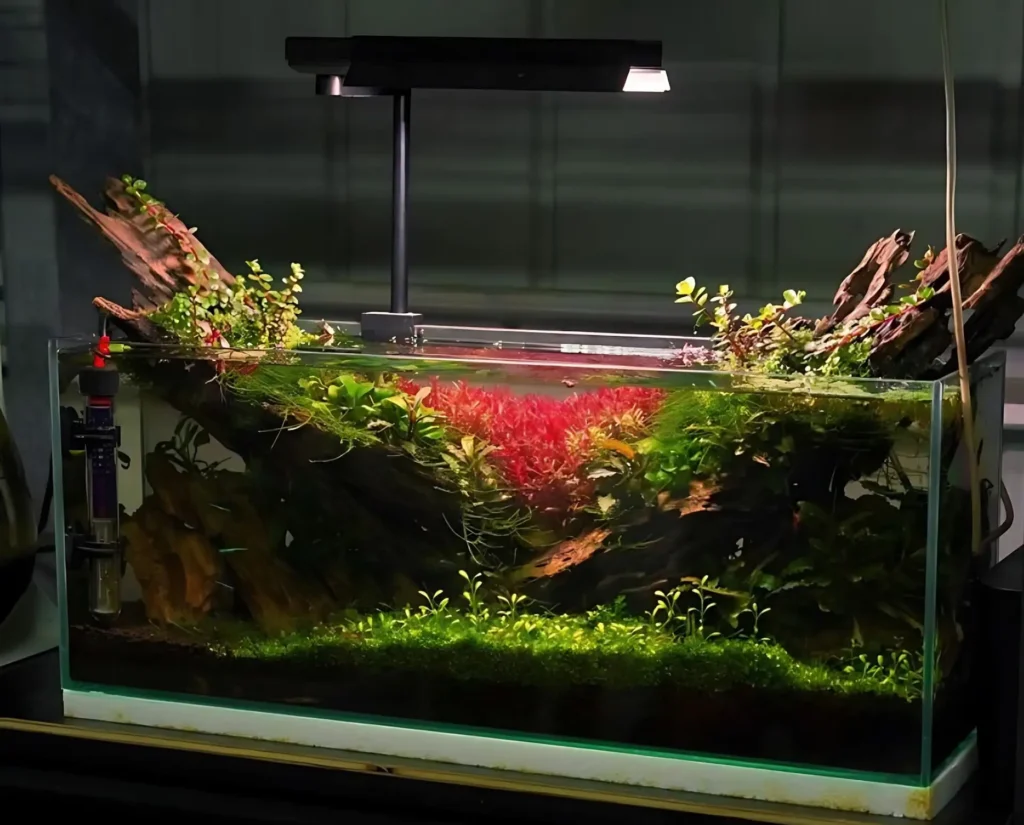
33: ❌💧 Myth 6: – If you add fertilizers, you’ll get algae.
Truth: Algae outbreaks are not caused just by fertilizers. They’re caused by imbalanced tanks – when light, CO₂, and nutrients aren’t in sync.
📌 In a healthy planted tank:
Fertilizers feed your plants, not algae.
Algae thrives when plants are starved or stressed.
No ferts = hungry plants = more algae, not less!
✅ Balanced dosing = healthier plants = less algae. Don’t starve your aquascape – feed it right! 🌱✨
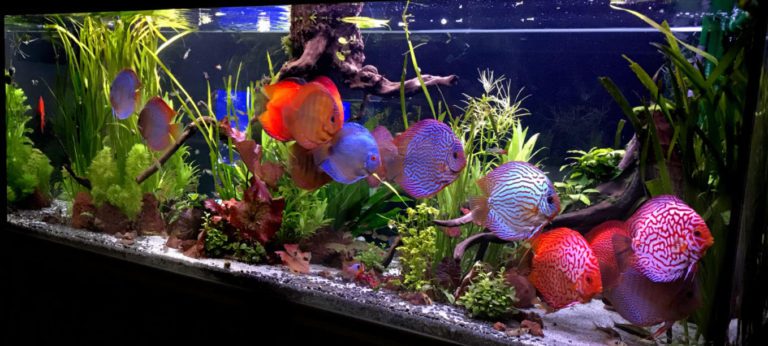
34: 🐟🌿 🚫Myth 7: – Fish and plants don’t go together.
Truth: Many fish love planted tanks — and benefit from them. Live plants reduce stress, improve water quality, and provide shelter for fish. It’s like giving them a natural home instead of a sterile box. Just avoid plant-destroyers like goldfish or large cichlids.
Fish + plants = harmony. Nature knows best. 🐠🌿

